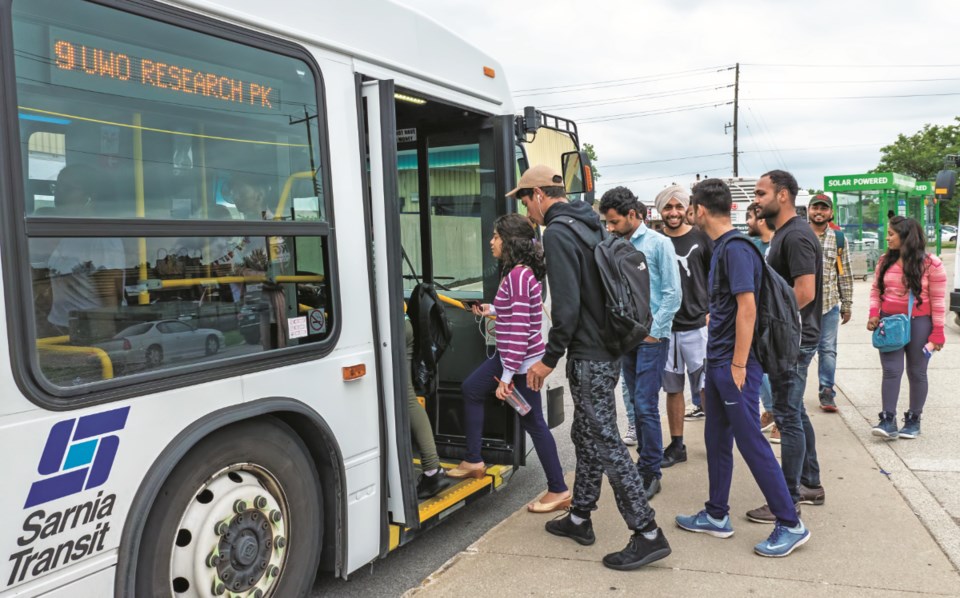The City of Sarnia is inviting residents to provide feedback through its newly launched Sarnia Transit Rider Survey, which seeks to gather insights into how the local public transit system can be improved based on the needs and experiences of its users.
To help guide the discussion, it's useful to consider the perspective of Jarrett Walker, a transit consultant and author of the blog Human Transit. His approach, known as “The Transit Ridership Recipe,” offers key strategies for designing effective transit systems that focus on maximizing ridership.
One of the first concepts in Walker’s framework is the “Ridership/Coverage Tradeoff.” The central question here is: “Where can we find large groups of people and places they frequent in ways that are cost-effective to serve?”
To illustrate this, imagine you are a transit planner for a fictional town with 18 buses and a map dotted with people, jobs, and destinations. The first decision is whether to prioritize ridership or coverage in the design of the transit system.
In a ridership-focused design, buses concentrate on high-traffic areas for frequent, reliable service, benefiting those in dense, walkable neighbourhoods. However, less populated areas may have limited service. Walker states this approach promotes more transit-oriented development, reduces congestion, and minimizes subsidies by serving more riders with fewer resources.
A coverage-focused design spreads service more evenly, ensuring all residents have access to a bus stop. While inclusive, Walker suggests it results in less frequent service, longer wait times, and lower ridership. However, the expanded boundary can sometimes provide essential access for non-drivers, people with mobility needs, and promotes a ‘sense’ of political equity by serving all areas.
The challenge, as Walker’s analysis suggests, is finding the right balance. With limited resources, transit agencies must weigh the trade-offs between maximizing ridership and ensuring widespread coverage—goals that ultimately pull the system in different directions, yet both are essential for a successful transit network.
Looking at Sarnia’s Transit Network, it currently follows a coverage-oriented approach, with long, indirect routes and infrequent service. For most major routes, the wait time is 40 minutes, and for less trafficked routes, it stretches to 60-80 minutes. This is well below the 15-minute frequency Walker says is required for high ridership, which is essential for convenience, reliability, and promoting transit-oriented development. Frequencies lower than that, he states, have a much lower performance.
For non-drivers that live along or near established transit corridors such as Devine Street, Confederation Street, Exmouth Street, London Road, and Murphy Road, service limitations make everyday errands difficult. Based on Walker’s recommendations for high ridership, Sarnia could shift toward fewer, more direct routes with a 15-minute frequency, while reducing or eliminating direct service coverage to areas with lower demand.
In cases where residents fall outside the coverage area but still have essential transit needs, Sarnia could lean on the existing Sarnia Care-A-Van service and look at bolstering this service in underserved areas as ridership increases along major routes. This specialized service offers door-to-door accessible transportation for individuals with disabilities who cannot access regular transit.
The Sarnia Transit Rider Survey is open until 4 p.m. on December 20, and residents are encouraged to participate to help shape the future of the city’s transit system.
